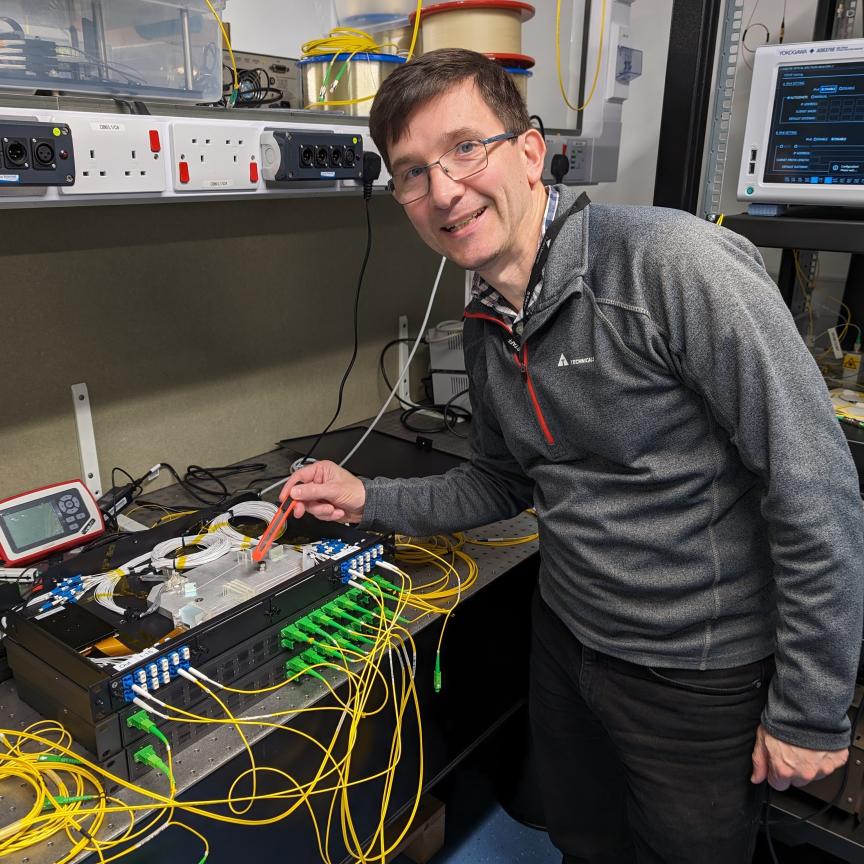Fibre network deployment is picking up pace across the globe. In the USA, the latest figures from Fiber Broadband Association show that fibre is now deployed to 68.3 million homes, reaching nearly 50% penetration. According to the FTTH Council Europe’s latest Market Panorama, FTTH/B coverage in the EU39 now reaches 57% of households, confirming the continuous upward trend which has been observed for several years in a row now.
Europe has experienced a similar upward trend, with the FTTH Council Europe’s most recent Market Panorama figures detailing that FTTH/B coverage in the EU39 countries now reaches 57% of households. Meanwhile, the latest update from the Organisation for Economic Co-operation and Development (OECD) broadband portal demonstrates that fibre subscriptions increased by 18.6% over the year to December 2021 in the 38 member countries, jumping ahead of cable, now at 32.4% of fixed broadband subscriptions, with DSL at 27% and declining.
This is great for the industry, and comes off the back of a huge cycle of investment. But as network providers and operators will be all too aware, the quality of networks is just as crucial a factor as the quantity. Operators work hard to ensure that their networks have the best spectral efficiency and fibre capacity for customers, with the added goal – particularly given the current cost-of-living situation – of reducing cost-per-bit, footprint, and power consumption.
A different way of thinking
This can be arduous, even in the most ideal network conditions, but, as Paul Momtahan, Director of Solutions at Infinera, explains: “In reality, with a lot of terrestrial networks, the conditions aren't so favourable.” This means that operators have to think differently when leveraging technology such as the optical engine for these networks in order to counteract challenges such as high-loss spans, low chromatic dispersion, high ROADM cascade, and even difficult weather conditions.
High loss spans can occur if the fibre has been cut and spliced together a lot, or if it is a very long fibre (more than 100km). Momtahan elaborates: “The amplifiers have to work extra hard when you have these very high loss bands, and that creates a lot of noise, which the optical engine needs to be able to cope with. This is more common in long haul networks, where there are more reasons to use longer spans, either to save money or because there is not anywhere to physically put in an amplifier site. But it can also occur in Metro networks within markets that might have less regulated construction, where fibres are being cut more frequently and so they end up with really high attenuation.”
To help operators overcome this particular challenge, Momtahan recommends that operators look for a number of features from their optical engine. One is long code word, probabilistic constellation shaping (PCS). “That will give them greater distance between the constellation points and provide better noise tolerance,” he said. Other features to look out for include a high-gain forward-error-correction option and forward-error-correction gain sharing.
When it comes to low chromatic dispersion, operators need to consider the fibre they use. Momtahan explains: “There are two main fibre types that have been deployed for terrestrial networks, G.652, and then G.655. The latter was quite a popular fibre back in the day because it had, amongst other things, low chromatic dispersion. In the pre-coherent days, having chromatic dispersion was a problem and the requirement was for low chromatic dispersion. But with coherent transmission, high chromatic dispersion is required to help mitigate nonlinearities. So, we see a lot of networks that use legacy G.655 fibre, and the low chromatic dispersion creates challenges in terms of nonlinearities.”
Perfect partnership
This is a challenge that Infinera, in partnership with USA operator Verizon, worked to overcome as part of an ongoing collaboration between the companies. Infinera’s 800G next-generation coherent optical engine, ICE6 was leveraged for a field trial that saw Verizon engineers identify challenging links and fibres in their network for the ICE6 engine.
After initial discussions, the team, led by Mark Snyder, Director, Systems Engineering at Infinera, settled on three paths using G.655 fibre to test the optical engine’s performance – running at 800G, 600G, and 400G rates. In a matter of two days, the team executed three separate tests over three different routes in the Verizon network. Despite the trial taking place in the middle of the pandemic, which meant that the number of people able to work together on site was limited, the team was able to close the first link on the first day, between Atlanta and Nashville at 800G over 667km. The Atlanta to Memphis and Atlanta to Dallas paths at 600G (over 2,283km) and 400G (over 4,091km), respectively, in the following hours and on the second day to enable some overnight soak testing.
The challenge surrounding high ROADM cascade comes because every time a ROADM is passed-through, it can impact the signal. Says Momtahan: “ROADMs are great in that they can switch wavelengths, making the network a lot more flexible. But every time a ROADM is passed-through, it impacts the signal in three ways. Firstly, the spectrum for the signal narrows as it passes through the ROADM because all the ROADMs don't exactly line up. Secondly, it can cause polarisation dependent loss, so there is more loss on one polarisation than the other. The third challenge is inside the ROADM, as there is quite a lot of loss in the wavelength selective switches and other components. When there is loss, the operator needs to amplify, and that adds noise. Each ROADM can add as much noise as 40 to 80km span. This is particularly a challenge in Metro networks where a lot of ROADMs are passed.”
Momtahan recommends that operators look for optical engine features that offer tolerance to the filter narrowing effect. These include a tight roll-off that keeps the spectral width of the wavelength close to the baud rate. Something else to look out for is dynamic bandwidth allocation (DBA). Elaborates Momtahan: “This allows more data on the inside part of the wavelengths and less on the outside part of the wavelength, which is subject to filter narrowing conditions. In terms of polarisation dependent loss, ICE6, for example, has the capability to digitally rotate the wavelengths in order to minimise this. We do that in the DSP transceiver and then for the noise inside the ROADM, we have the same features as those which address the noise in long spans.”
Another challenge for terrestrial network operators emerges when the fibre is run along utility lines, rather than buried in the ground. This uses optical ground wire (OPGW) cable, which, if lightning strikes, means that the polarisation rotates very quickly and can cause temporary outages. What operators can look out for to help here is an optical engine with very fast SOP rotation tracking. Momtahan explains: “Here, there is specific circuitry within the digital signal processor (DSP) that can be turned on or off depending on whether the operator is using arial or fibre. Nyquist subcarriers are also a useful feature when it comes to high SOP rotation tolerance.”
Concludes Momtahan: “Optical engines can be used for really long distances at high capacity and provide really good performance in favourable conditions, but getting good performance when the conditions aren't favourable requires slightly different features and capabilities. With the right product, operators can leverage additional capabilities so that, even if they don’t have perfect conditions, they can still really boost the performance on the network.”


